A novel cell culture system modeling the SARS-CoV-2 life cycle
- PMID: 33711082
- PMCID: PMC7990224
- DOI: 10.1371/journal.ppat.1009439
A novel cell culture system modeling the SARS-CoV-2 life cycle
Abstract
Severe acute respiratory syndrome coronavirus 2 (SARS-CoV-2) causes the global pandemic of COVID-19. SARS-CoV-2 is classified as a biosafety level-3 (BSL-3) agent, impeding the basic research into its biology and the development of effective antivirals. Here, we developed a biosafety level-2 (BSL-2) cell culture system for production of transcription and replication-competent SARS-CoV-2 virus-like-particles (trVLP). This trVLP expresses a reporter gene (GFP) replacing viral nucleocapsid gene (N), which is required for viral genome packaging and virion assembly (SARS-CoV-2 GFP/ΔN trVLP). The complete viral life cycle can be achieved and exclusively confined in the cells ectopically expressing SARS-CoV or SARS-CoV-2 N proteins, but not MERS-CoV N. Genetic recombination of N supplied in trans into viral genome was not detected, as evidenced by sequence analysis after one-month serial passages in the N-expressing cells. Moreover, intein-mediated protein trans-splicing approach was utilized to split the viral N gene into two independent vectors, and the ligated viral N protein could function in trans to recapitulate entire viral life cycle, further securing the biosafety of this cell culture model. Based on this BSL-2 SARS-CoV-2 cell culture model, we developed a 96-well format high throughput screening for antivirals discovery. We identified salinomycin, tubeimoside I, monensin sodium, lycorine chloride and nigericin sodium as potent antivirals against SARS-CoV-2 infection. Collectively, we developed a convenient and efficient SARS-CoV-2 reverse genetics tool to dissect the virus life cycle under a BSL-2 condition. This powerful tool should accelerate our understanding of SARS-CoV-2 biology and its antiviral development.
Conflict of interest statement
I have read the journal’s policy and the authors of this manuscript have the following competing interests: Q.D. and X.J. have filed a patent application on the use of the SARS-CoV-2 transcomplementation system and its use for anti-SARS-CoV-2 drug screening.
Figures
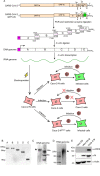
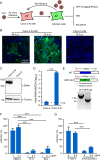
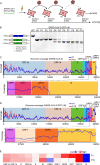

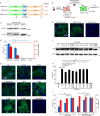

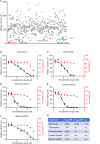
Comment in
-
Two courses of deconstructed coronavirus please.PLoS Pathog. 2021 Apr 29;17(4):e1009547. doi: 10.1371/journal.ppat.1009547. eCollection 2021 Apr. PLoS Pathog. 2021. PMID: 33914844 Free PMC article. No abstract available.
Similar articles
-
A Nucleocapsid-based Transcomplementation Cell Culture System of SARS-CoV-2 to Recapitulate the Complete Viral Life Cycle.Bio Protoc. 2021 Nov 5;11(21):e4257. doi: 10.21769/BioProtoc.4257. eCollection 2021 Nov 5. Bio Protoc. 2021. PMID: 34859136 Free PMC article.
-
A BSL-2 compliant mouse model of SARS-CoV-2 infection for efficient and convenient antiviral evaluation.J Virol. 2024 Jul 23;98(7):e0050424. doi: 10.1128/jvi.00504-24. Epub 2024 Jun 20. J Virol. 2024. PMID: 38899934 Free PMC article.
-
Development of a Single-Cycle Infectious SARS-CoV-2 Virus Replicon Particle System for Use in Biosafety Level 2 Laboratories.J Virol. 2022 Feb 9;96(3):e0183721. doi: 10.1128/JVI.01837-21. Epub 2021 Dec 1. J Virol. 2022. PMID: 34851142 Free PMC article.
-
Design and Application of Biosafe Coronavirus Engineering Systems without Virulence.Viruses. 2024 Apr 24;16(5):659. doi: 10.3390/v16050659. Viruses. 2024. PMID: 38793541 Free PMC article. Review.
-
Overview of SARS-CoV-2 genome-encoded proteins.Sci China Life Sci. 2022 Feb;65(2):280-294. doi: 10.1007/s11427-021-1964-4. Epub 2021 Aug 10. Sci China Life Sci. 2022. PMID: 34387838 Free PMC article. Review.
Cited by
-
Protocol for characterizing the inhibition of SARS-CoV-2 infection by a protein of interest in cultured cells.STAR Protoc. 2022 Oct 4;3(4):101802. doi: 10.1016/j.xpro.2022.101802. eCollection 2022 Dec 16. STAR Protoc. 2022. PMID: 36345374 Free PMC article.
-
Application of pseudovirus system in the development of vaccine, antiviral-drugs, and neutralizing antibodies.Microbiol Res. 2022 May;258:126993. doi: 10.1016/j.micres.2022.126993. Epub 2022 Feb 16. Microbiol Res. 2022. PMID: 35240544 Free PMC article. Review.
-
The Deubiquitinase USP29 Promotes SARS-CoV-2 Virulence by Preventing Proteasome Degradation of ORF9b.mBio. 2022 Jun 28;13(3):e0130022. doi: 10.1128/mbio.01300-22. Epub 2022 May 31. mBio. 2022. PMID: 35638730 Free PMC article.
-
Functional dissection of the spike glycoprotein S1 subunit and identification of cellular cofactors for regulation of swine acute diarrhea syndrome coronavirus entry.J Virol. 2024 Apr 16;98(4):e0013924. doi: 10.1128/jvi.00139-24. Epub 2024 Mar 19. J Virol. 2024. PMID: 38501663 Free PMC article.
-
Inhibition of the RLR signaling pathway by SARS-CoV-2 ORF7b is mediated by MAVS and abrogated by ORF7b-homologous interfering peptide.J Virol. 2024 May 14;98(5):e0157323. doi: 10.1128/jvi.01573-23. Epub 2024 Apr 4. J Virol. 2024. PMID: 38572974 Free PMC article.
References
Publication types
MeSH terms
Substances
LinkOut - more resources
Full Text Sources
Other Literature Sources
Medical
Molecular Biology Databases
Research Materials
Miscellaneous

